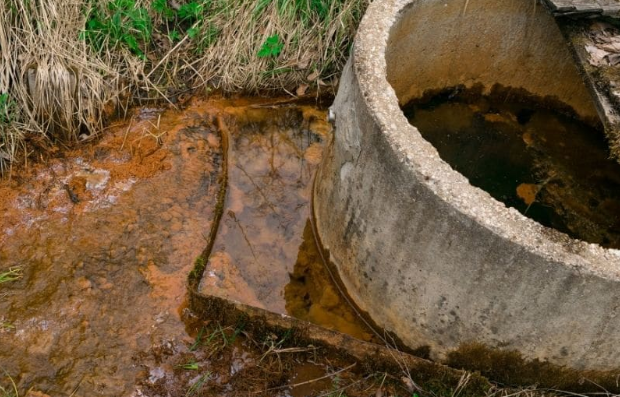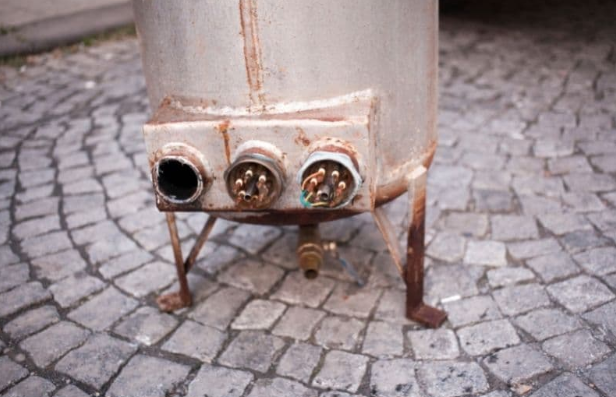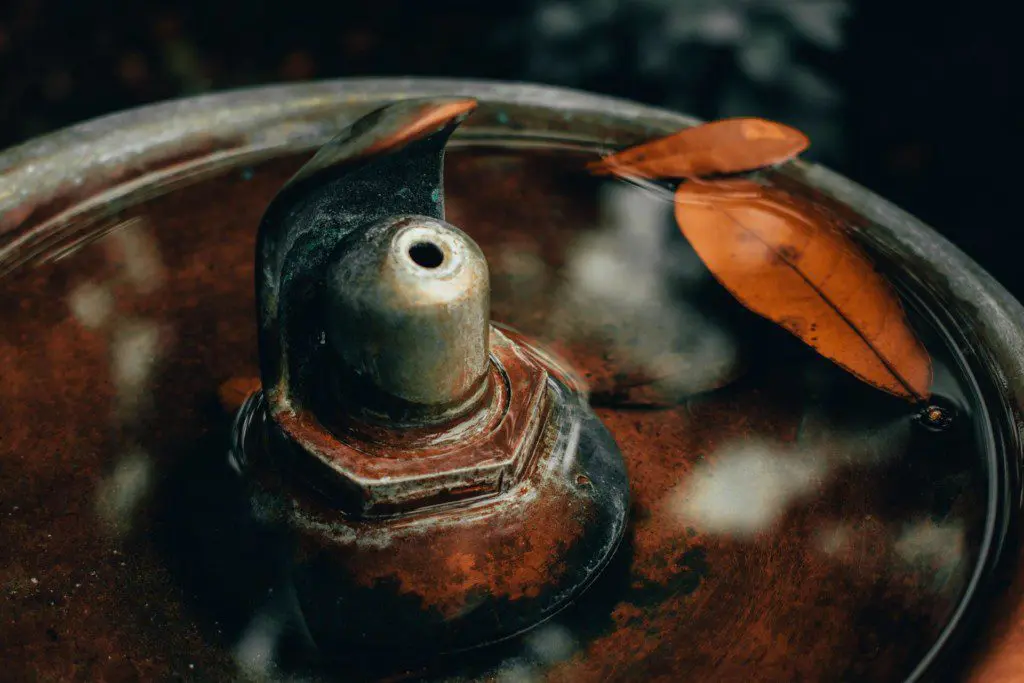Introduction
The crust of the planet contains the mineral iron. It turns into one of the most harmful and challenging pollutants in a well water supply when it interacts with bacteria to generate iron bacteria, which are extremely hard to remove.
You could think the situation is out of your league if you have an iron bacteria problem.
There’s no need to panic, though; it’s simpler than it seems when it comes to treating iron bacteria from your water source.
You will probably have problems with iron in your water if your drinking water is from a private well. Poor-tasting coffee to visibly orange streaks in the toilet and bathtub might be among these problems. Iron bacteria, often known as “iron-eating” or “iron-oxidizing” bacteria, are a related but less well-known issue related to iron pollution.
One of the minerals that is most prevalent in the crust of the planet is iron. The groundwater that supplies wells typically has higher quantities of iron bacteria as a result, which frequently encourages the development of iron bacteria in well water.
In order to create a marshy sludge that contains rust deposits, bacterial cells, and other organic and inorganic debris, these organisms can mix oxygen with iron, manganese, or other nutrients in the water.
After the bacteria’s adhesion to the slimy residue, the pipes, pumps, plumbing fittings, and other equipment get clogged, develop unpleasant tastes and smells, corrode, etc.
Systems using well water that are utilized seldom or sporadically are often more susceptible to iron bacteria problem.
We advise adopting measures to stop these organisms from developing in your well in the first place because, to make matters worse, getting rid of them from your water might be challenging.
Fortunately, the method described in this article for eliminating iron bacteria from well water is very efficient. First, let’s talk about iron bacteria and how they enter well water.
Continue reading if you want access to pure, secure drinking water that won’t harm you or your house.
What is Iron Bacteria?

Iron bacteria are made up of bacteria, oxygen, and iron (or manganese).
These small organisms leave behind sticky, slimy deposits on your well, pipes, plumbing, and fixtures, so you’ll be able to tell whether they’re in your water supply.
What Are the Effects of Bacteria Iron?
You probably won’t notice any impacts if your water doesn’t contain a lot of iron bacteria.
Nevertheless, dissolved iron will oxidize and degrade when bacteria interact with high iron levels, creating a slimy, reddish-brown substance.
Your house may experience a variety of impacts as a result of these deposits.
In particular, the iron bacteria problem in well water corrodes pipelines and harms equipment. It could clog your drains as well.
Plumbing Corrosion
When it comes to corrosion, iron bacteria is a particularly unpleasant mix. Ferric chlorides, which are hostile, are produced when iron and manganese bacteria oxidize.
They can degrade surfaces and chew away at your metal plumbing and pipes, bringing metal flakes into your water.
Within your plumbing, iron bacteria may create micro-zones with high acidity and excessive quantities of corrosive ions, which will erode the plumbing equipment. The corrosion is typically worse where there is standing water.
As a result, if you see that your pipes and plumbing fixtures are rusting excessively, it may be because your water contains iron bacteria.
Your plumbing may ultimately sustain enough damage from iron bacteria to develop fractures, holes, and leaks.
Blocked Drains
If your well’s water output suddenly drops, the presence of a large number of iron bacteria and the bacterial slime they make may be to blame.
Iron bacteria may form a slimy residue that can accumulate in pipes and block them, lowering the amount of water that can be used by your washing machine, water heater, dishwasher, or other water-using appliances within your house. Systems for water filtration and water softeners might be impacted by this reduced flow.
Iron bacteria may form a thick, slimy material that can build up in your pipes and slow down water flow.
Your drains may also become covered with this muck, which finally causes a full obstruction. If you have to often clean iron bacteria slime out of your drains, you probably have an iron bacteria issue.
Damaged Appliances

The fact that iron bacteria may harm household equipment, including dishwashers, washing machines, and hot water heaters, should not come as a surprise.
On the interior of your appliances for your well water, iron bacteria slime buildup can block them and prevent them from functioning correctly. Slime made by iron bacteria also serves as an insulating layer.
This poses a specific problem for your hot water heater since it will have to work harder and for longer periods of time to heat your water, decreasing its efficiency.
How Do I Know If I Have Iron Bacteria in My Water?

Taste and Odor
If you have an iron bacteria issue, your water will taste and smell notably bad.
Iron and manganese-rich water frequently have sewage-like or marshy scents. Your water may also have a faintly pleasant fragrance, and it may taste a bit like stale food or gasoline.
Also, particularly if you’re dealing with a high sulfur bacteria percentage, your water may smell like rotten egg smell or sewage.
Water Color
Your water will have a reddish or brownish tint if there is iron present. As airborne oxygen comes into touch with dissolved iron, it oxidizes. You’ll see rust-colored oxides in your water as a result of this process.
Your toilet tank’s inside surfaces should reveal any iron issues. Iron bacteria seem to proliferate here more frequently than other places.
Slimy Deposits
The next level up from having a rust-like hue to your water is slimy deposits. These deposits, which may float on the water surface or attach to surfaces, are brought on by decomposing iron oxides.
Check your toilet tank once again for this iron oxidation symptom. It will attach to the inside of the tank if iron bacteria has been allowed to accumulate over time. On the surface of your water, you can see an oily sheen.
Over time, these deposits in your toilet tank might become a significant issue, and you might need to empty the contents and start again.
How to Test For Iron Bacteria
Testing your water is worthwhile if you suspect that it contains iron bacteria in order to identify the specific problem.
The BART is the exam that works best for this purpose (Biological Activity Reaction Test). This kind of testing may be used to find sulfur bacteria, a typical well water pollutant, as well as iron bacteria.
The BART has the benefit of being far less expensive than having your water sent to a lab and is thus preferable. Also, you may do the test without using a microscope, incubator, or any other form of research setup.
You should test your water at room temperature for the most reliable results.
The BART employs a plastic tube with a little ball inside of it. A form of crystalline medium that is intended to test for each species of bacterium is present on the vial’s bottom surface.
The crystallized media will dissolve when you add a water sample to the tube, which will cause the ball to rise to the surface of the water.
Anaerobic organisms (those that don’t need oxygen to develop) will be at the bottom of the oxygen gradient created by the ball, while oxygenic organisms (those that need oxygen to flourish) will be at the top.
The BART can be used to identify the presence of iron bacteria and gauge their general levels of activity. Typically, testing kits cost between $40 and $50. While using the BART, you’ll need to be patient because most kits advise monitoring your water every day for eight days.
Sending a sample of your water to a licensed laboratory for in-house testing is an option to doing bacteria tests at home.
Although it will cost you more money, doing so typically yields findings that are a little bit more accurate. I suggest Tap Score as the top lab test.
How to Remove Iron Bacteria From Well Water
There are several techniques and remedies made especially for getting rid of iron bacteria from private well water supply. Physical removal, shock chlorination, and ongoing disinfection may be used in these.
Physical Removal
Physical removal is the first step in the iron bacteria treatment process. The ideal person to employ for this work is a qualified plumber or handyman.
Your well’s machinery will first be taken out and cleaned. Also, a plumber will clean the interior of your well casing and get everything ready for chemical treatment.
Shock Chlorination
Shock chlorination can be your best bet if you have a really serious iron bacteria problem.
The bulk of germs will be immediately eliminated using this strategy. Shock chlorination is capable of eradicating iron bacteria if it has been accumulating over months or years.
Circulating household bleach or some comparable disinfectant via plumbing and well water systems is how chlorine shock disinfection is carried out. You should test your well water once again one to two weeks after starting this treatment to find out how many germs are present.
Be aware that while chlorine may be inexpensive, it isn’t necessarily the best option. To treat it properly, you might need to apply chlorine more than once. To solve the problem successfully, apply chlorine at the proper concentration.
To combat iron and sulfur bacteria, use chlorine at concentrations of up to 200 PPM. If you don’t use a continuous disinfection system, you might need to shock your water system two to three times a year to clear the iron and sulfur bacteria.
Continuous Disinfection
The bulk of iron bacteria in well water may be eliminated by shock chlorination. Nevertheless, because bacteria frequently accumulate in layers of deposits, this method of water treatment might not be able to reach all of the germs.
In order to destroy germs and keep it at bay, prolonged, long-term contact with a disinfectant is necessary.
These stages are used in this method:
Chemical Injection
One of the most popular and long-lasting methods of getting rid of iron bacteria is chemical injection.
This form of water purification is comparable to that of a municipal water provider. The system adds a chemical to your water, often chlorine, which works as a disinfectant and destroys iron bacteria in well water and other related organisms.
Retention
Your drinking water will need to remain in a storage tank after injection for a while before it can be utilized.
Bacteria cannot be instantly killed by chlorine, therefore it is difficult to kill iron bacteria. Water will be stored in a retention tank for a sufficient amount of time to allow the chlorine to do its work before entering your home. The amount of drinking water you have access to at any given moment will depend on the size of this tank.
Filtration
Filtering away the water’s impurities, including bacteria, oxidized metals, and disinfectant chemicals, is the last step in continuous disinfection.
How to Prevent Iron Bacteria from Entering Your Well System
If iron bacteria are present in a household’s water supply, it may be difficult to completely eradicate them. Hence, it is always preferable to avoid them than to make an effort to do so.
The drilling procedure, the submersible pump installation, assembly, and any repair and maintenance procedures must be carried out with precise preventative measures in mind to drastically decrease the likelihood of any iron bacteria entering your well water system.
Here are a few ways to prevent it: Keep casing pipe lengths, pumps, and drill bits tidy and off the ground.
Finally, only use disinfected water to dig, repair, or prime pumps in a well. Never consume water derived from lakes, rivers, streams, or ponds, which are surface sources.
Make sure the well casing is covered, waterproof, and rises at least one foot above the ground. After making repairs, always remember to clean the piping, pump, and well.
How to treat iron bacteria in well water: Final thoughts
While iron bacteria don’t always pose a risk to a person’s health, they taint the water’s flavor and produce disagreeable odors that can be challenging to deal with.
Iron bacteria must be found and eliminated as soon as possible since they are extremely corrosive and may seriously harm your plumbing and equipment.
You should be able to successfully eliminate iron bacteria from your water by following the detailed instructions above.
